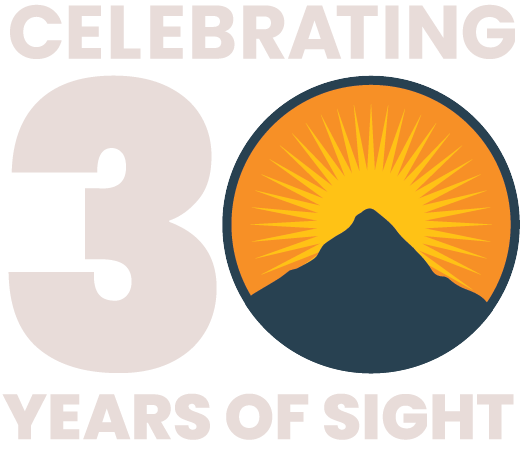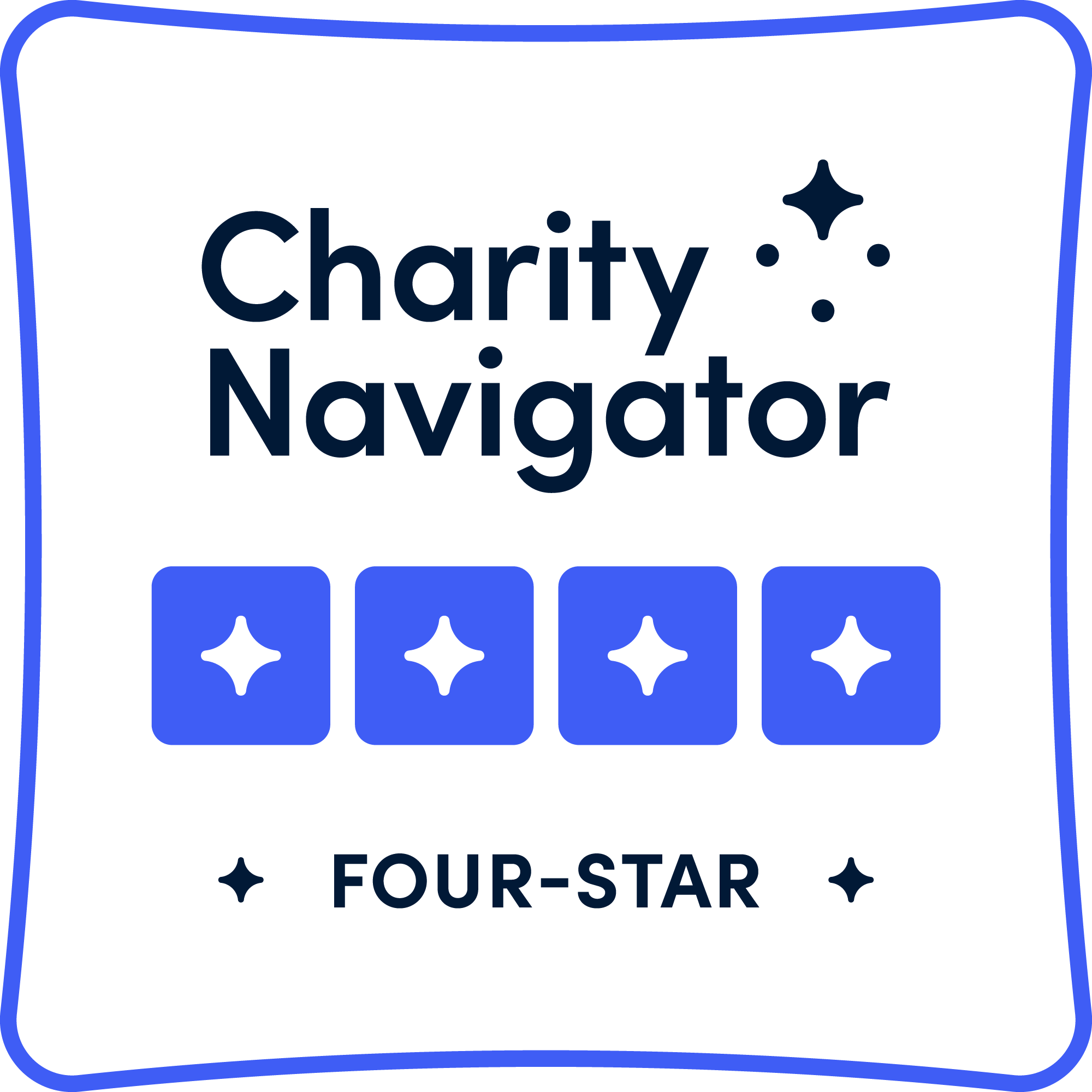Glaucoma: Symptoms, Causes and Treatments
Is Surgery the Best Treatment for this Blinding Disease?
What is Glaucoma?
Glaucoma is the leading cause of irreversible blindness worldwide, https://www.thelancet.com/journals/lancet/article/PIIS0140-6736(17)31469-1/abstract earning it the nickname “the silent thief of sight”. https://eyewiki.org/Tele-Glaucoma According to the World Health Organization, 76 million people ages 40-80 years old suffer from glaucoma https://pmc.ncbi.nlm.nih.gov/articles/PMC7769798/, and that number is estimated to be 111.8 million by 2040. https://www.who.int/docs/default-source/documents/publications/world-report-on-vision-accessible-executive-summary.pdf
Glaucoma is a serious eye disease in which intraocular pressure (IOP) builds up and damages the optic nerve. https://www.voeyedr.com/blog/cataract-vs-glaucoma/ This pressure causes a loss of retinal ganglion cells and retinal nerve fiber layers https://pmc.ncbi.nlm.nih.gov/articles/PMC7769798/, a change which causes the optic nerve head to cup. https://www.thelancet.com/journals/lancet/article/PIIS0140-6736(17)31469-1/abstract As the nerve head in the back of the eye is disfigured, the peripheral vision is reduced. https://www.thelancet.com/journals/lancet/article/PIIS0140-6736(17)31469-1/abstract
Cataracts Vs. Glaucoma
Cataracts and glaucoma contribute significantly to worldwide vision loss: an estimated 65.2 million people suffer from cataracts and another 76 million from glaucoma. https://www.who.int/docs/default-source/documents/publications/world-report-on-vision-accessible-executive-summary.pdf Both are largely age-related conditions. And both are painless, except in a few rare cases. https://www.voeyedr.com/blog/cataract-vs-glaucoma/ The similarity between the two ends there.

Detailed anatomy of Glaucoma.
What differences are there between cataracts and glaucoma? Cataracts cloud sight https://www.mayoclinic.org/diseases-conditions/cataracts/symptoms-causes/syc-20353790 and affect central vision, while glaucoma leads to tunnel vision. https://www.voeyedr.com/blog/cataract-vs-glaucoma/ Cataract symptoms are detectable. https://www.voeyedr.com/blog/cataract-vs-glaucoma/ Glaucoma symptoms, on the other hand, can feature a gradual progression that goes unnoticed. Once glasses no longer help, the treatment for cataracts is surgery—and only surgery—with long lasting results. https://www.voeyedr.com/blog/cataract-vs-glaucoma/ Glaucoma treatment has a few more options: eye drops, laser procedures, and surgery to lower and manage eye pressure. https://www.voeyedr.com/blog/cataract-vs-glaucoma/ Vision loss brought on by cataracts in otherwise healthy eyes is curable with a minimally invasive surgery; glaucoma’s damage to eyesight is permanent. https://www.voeyedr.com/blog/cataract-vs-glaucoma/
While both conditions are public health concerns, the fact that glaucoma leaves permanent blindness makes both its diagnosis and treatment more complex than that of cataracts. https://pmc.ncbi.nlm.nih.gov/articles/PMC7769798/
Open-Angle Glaucoma: Most Common
“Primary open-angle glaucoma, the most common type of glaucoma, has no pain, no headache, no pressure, no vision loss because [this] glaucoma is a problem of the optic nerve” notes Dr. Ashiyana Nariani, Senior Technical Advisor on Ophthalmic Training and Research for Cure Blindness Project.
Often, this “silent thief of vision” has no symptoms until significant damage has occurred. https://eyewiki.org/Tele-Glaucoma As primary open-angle glaucoma advances, Nariani explains, “It affects [peripheral] vision first and it's slow.”
What is meant by “open angle”? The open angle is located where the cornea meets the iris. https://www.allaboutvision.com/conditions/glaucoma/primary-open-angle/ In a healthy eye, the aqueous humor travels along the interior of the iris, then performs a U-turn in the anterior chamber, then moves along the exterior of the iris. https://www.allaboutvision.com/conditions/glaucoma/primary-open-angle/ When the aqueous humor reaches the edge of the iris, it has traveled to the angle. https://www.allaboutvision.com/conditions/glaucoma/primary-open-angle/
Open-angle glaucoma means there is a blockage or excessive pressure at the end of the aqueous humor’s journey along its drainage channel, leading to excessive intraocular pressure. https://www.allaboutvision.com/conditions/glaucoma/primary-open-angle/ This excessive pressure is what leads to optic nerve damage.
It is estimated that 57.5 million people worldwide are affected by primary open-angle glaucoma. https://pmc.ncbi.nlm.nih.gov/articles/PMC7769798/
Open-angle glaucoma can be classified into primary or secondary open-angle glaucoma. If the cause of the glaucoma is undetermined, the condition is referred to as “primary”; if its cause is known, the glaucoma is referred to as “secondary”. https://pmc.ncbi.nlm.nih.gov/articles/PMC7769798/ Primary and secondary open-angle glaucoma both present with a progression in the increase of IOP and in the neuropathy of the optic nerve. A sub-type of primary open-angle glaucoma is normal-tension glaucoma in which, as its name implies, the IOP is normal while the optic neuropathy continues to progress. https://pmc.ncbi.nlm.nih.gov/articles/PMC7769798/
“When I see patients who have primary open glaucoma, I have to check pressure because, even if the pressure is the normal 10 to 21, the glaucoma could be because of normal tension glaucoma,” Nariani explains. “Another possibility is that the optic nerve is cupping and damaging, which means that even normal pressure can be causing damage for that patient because that is too high a pressure for them.”

Myupchar/Creative Commons 4.0
Angle-Closure Glaucoma: A Medical Emergency
Despite being less common than open-angle glaucoma, angle-closure glaucoma has a higher incidence of blindness and is a medical emergency. As with all chronic forms of glaucoma, early detection by ophthalmological examination is mandatory, as the condition is painless and symptoms occur late. https://www.thelancet.com/journals/lancet/article/PIIS0140-6736(17)31469-1/abstract
Primary angle-closure glaucoma starts when the drainage angle between the iris and the cornea closes, causing eye pressure to spike. https://www.voeyedr.com/blog/cataract-vs-glaucoma/ Symptoms can include severe eye pain, nausea, vomiting, blurred vision, and seeing halos around lights. https://www.voeyedr.com/blog/cataract-vs-glaucoma/
Primary angle-closure glaucoma can be classified as acute or chronic. Both acute and chronic conditions involve the closing of the anterior chamber angle. https://pmc.ncbi.nlm.nih.gov/articles/PMC7769798/#REF1 In acute diagnoses, the pressure increases suddenly. In the chronic diagnosis, the IOP increases gradually. https://pmc.ncbi.nlm.nih.gov/articles/PMC7769798/#REF1
Causes of secondary angle-closure glaucoma include: inflammation, trauma, tumors and certain medications. https://pmc.ncbi.nlm.nih.gov/articles/PMC7769798/#REF1
Glaucoma Risk Factors
Causes for glaucoma are plentiful. As a multifactorial optic degenerative neuropathy, the disease glaucoma often results from a combination of vascular, genetic, anatomical, and immune factors. https://pmc.ncbi.nlm.nih.gov/articles/PMC7769798/#REF1
Risk factors for primary open-angle glaucoma—the most common form of glaucoma—include high myopia Myopia, also known as nearsightedness, is a refractive error in which objects at a distance appear blurry., older age, elevated intraocular pressure, sub-Saharan African ethnic origin, and positive family history. https://www.thelancet.com/journals/lancet/article/PIIS0140-6736(17)31469-1/abstract
The main risk factors for primary angle-closure glaucoma—the less common form of glaucoma—are older age, hyperopia Hyperopia or farsightedness is a refractive error in which the eye does not bend light properly, so objects nearby are out of focus., and east Asian ethnic origin. https://www.thelancet.com/journals/lancet/article/PIIS0140-6736(17)31469-1/abstract
Any condition that elevates intraocular pressure can cause glaucoma. People with high myopia, hypotension Hypotension is low blood pressure., hypertension Hypertension is high blood pressure. , central cornea thickness of <5 mm, and eye injury are at an increased risk of glaucoma. https://pmc.ncbi.nlm.nih.gov/articles/PMC7769798/ Other contributors are smoking, vasospasm, migraine, and obstructive sleep apnea syndrome. https://pmc.ncbi.nlm.nih.gov/articles/PMC7769798/ Typical high-risk groups include people over the age of 60, family members of those already diagnosed, diabetics, steroid users, and people who are severely nearsighted. https://glaucoma.org/articles/glaucoma-facts-and-stats
Can Glaucoma be Cured?
There is no cure for glaucoma. “Elevated eye pressure is what damages the optic nerve. Once the optic nerve is damaged, it is a neurologic issue so, just like with a stroke or any damage to the brain, it can't come back again,” Dr. John Welling, former Ghana medical coordinator with Cure Blindness Project, explains. “Early detection and early treatment are key to preventing vision loss from glaucoma.”
Nariani explains, “The best course of action is to prevent intraocular pressure from progressing to optic nerve damage.”
Early detection and early treatment are key to preventing vision loss from glaucoma. Dr. John Welling
Depending on the stage of the eye disease, treatment options may start with eye drops that help reduce eye pressure. https://www.voeyedr.com/blog/cataract-vs-glaucoma/ Laser surgery can improve fluid drainage in the eye, which lowers the pressure. https://www.voeyedr.com/blog/cataract-vs-glaucoma/
In more advanced cases, surgery creates a new drainage pathway in the eye, helping to maintain normal pressure levels. https://www.voeyedr.com/blog/cataract-vs-glaucoma/ The mainstay of surgical treatment for glaucoma is trabeculectomy. Minimally Invasive Glaucoma Surgery (MIGS) lowers eye pressure, using tiny incisions and devices to improve fluid drainage. https://www.voeyedr.com/blog/cataract-vs-glaucoma/
Glaucoma Treatment in Low and Middle Income Countries

Cure Blindness Project-supported clinical training in Bhutan focused on early detection and management of eye conditions like glaucoma.

Cure Blindness Project-supported clinical training in Bhutan focused on early detection and management of eye conditions like glaucoma.
Since glaucoma is one of the main causes of vision loss, much attention should be given to the early diagnosis and treatment of glaucoma in regions and countries with low sociodemographic indexes, and every modifiable risk factor should be identified and reduced for a lower burden of glaucoma. https://www.mdpi.com/2077-0383/12/5/1828
Treating glaucoma in low- and middle-income countries is challenging, particularly when the need is geographically widespread and the treatment is long-term.
For rural patients with glaucoma in its early stages, traveling to the nearest big city’s ophthalmology practice may not seem like a need because they see no symptoms of the disease. In later stages of advancing glaucoma, they might be physically hampered in making the trip: their vision falters in tasks involving central and near vision (reading), and they struggle with mobility outside the home: walking, stair-climbing, and driving are not options. https://pmc.ncbi.nlm.nih.gov/articles/PMC7769798/ In addition, glaucoma is a significant predictor of depression, which may interrupt the motivation to seek care. https://pmc.ncbi.nlm.nih.gov/articles/PMC7769798/
A second challenge is to sustain care once the diagnosis is made. Eye drops, laser procedures, and surgeries may be needed over years of care. For patients in low- and middle-income countries, devoting time and money to maintain their eye pressure and stop glaucoma’s progression may not seem realistic.

Dr. Benedicta Appiah-Thompson, ophthalmologist at Cape Coast Teaching Hospital in Ghana

Dr. Benedicta Appiah-Thompson, ophthalmologist at Cape Coast Teaching Hospital in Ghana
“Eye drops cannot be afforded by many of our people over here [Ghana],” notes Dr. Benedicta Appiah-Thompson, ophthalmic surgeon at Cape Coast Teaching Hospital, a partner hospital of Cure Blindness Project. “Drops can be afforded for three months or six months but not for a year, and this is a lifetime medication.”
“We use surgery, which is the best form of treatment, next [after drops]. It's now being understood gradually by our people,” Appiah-Thompson continues. “A number of doctors advocate surgery as the first-line treatment for glaucoma in our part of the world. We need to train more people, get more machinery, and acquire more skills.”
Routine ophthalmology outreaches with glaucoma specialists are key to early diagnosis and treatment.
Tele-glaucoma: a Promising Pathway
Traditionally, glaucoma is diagnosed using ophthalmoscopy, tonometry, and perimetry. https://www.thelancet.com/journals/lancet/article/PIIS0140-6736(17)31469-1/abstract Ophthalmoscopy is a regular exam by an ophthalmologist to inspect the inside of the back of the eye. https://eyewiki.org/Binocular_Indirect_Ophthalmoscopy Tonometry tests the eye’s IOP; some versions of this exam use a puff of air into the eye to evaluate resistance to the air flow and measure the pressure within the eye. https://eyewiki.org/IOP_and_Tonometry Perimetry seeks to measure the eye’s visual field and, if glaucoma is advancing, will reveal whether or not the patient is getting tunnel vision. https://eyewiki.org/Primary_Open-Angle_Glaucoma Each of these exams requires the ophthalmologist to see the patient in person.

Dr. Gloria Kyeremeh uses an ophthalmoscope to complete an eye exam in Ghana.
One promising pathway to improve health outreach is tele-glaucoma, which enables ophthalmologists to evaluate rural patients remotely. Tele-glaucoma is one part of tele-ophthalmology. Tele-ophthalmology aims to detect the leading vision-threatening diseases (cataract, glaucoma, age-related macular degeneration, and diabetic retinopathy). https://eyewiki.org/Tele-Glaucoma Ophthalmic examinations for visual acuity as well as performing non-contact tonometry, structure, and function testing can easily be performed at satellite or remote sites. https://eyewiki.org/Tele-Glaucoma Current technologies are available that allow for IOP measurement: "air puff" tonometry, optical coherence tomography (OCT), and spectral domain (SD)-OCT. https://eyewiki.org/Tele-Glaucoma Those test results can then be forwarded to the physician for evaluation.
Tele-glaucoma can use a store and forward format or a tele-presence format. https://eyewiki.org/Tele-Glaucoma Store and forward telemedicine collects data from patients without the physician present, then forwards that data to the physicians for asynchronous analysis. https://eyewiki.org/Tele-Glaucoma Tele-presence means the patient is directly in contact with the screening team, with a live consultation using electronic mediums. https://eyewiki.org/Tele-Glaucoma
Wearable brain-computer interface devices, cellphone-based technologies, and robotics are being explored to bring the advantages of tele-glaucoma functional testing to underserved communities. https://eyewiki.org/Tele-Glaucoma
Additionally, artificial intelligence is being readily utilized in LMICs to diagnose the test results received.
How Cure Blindness Project Treats Glaucoma
Cure Blindness Project brings high-quality care to people with glaucoma in underserved communities in 30 nations across sub-Saharan Africa, South Asia and South America.
Most visibly, the global non-profit organization addresses the problem of glaucoma through surgeries performed by its volunteer ophthalmologists. Less well-known is the breadth of care Cure Blindness Project offers through prevention measures and training of local medical staff. Its Virtual Classroom offers an 18-month curriculum with lectures taught by both international and in-country expert faculty based on the American Academy of Ophthalmology (AAO) Basic Clinical Science Course. “We bring the curriculum, the reading schedule, and homework,” explains Nariani.

Glaucoma wet lab surgeries allow ophthalmic residents to gain experience through Cure Blindness Project supported training.

Glaucoma wet lab surgeries allow ophthalmic residents to gain experience through Cure Blindness Project supported training.
In 2025, Cure Blindness Project supplemented the virtual instruction with Live Classroom instruction, including a wet lab for training in glaucoma treatment. “The wet labs allow residents to practice before surgery,” Nariani observes.
The live training in the 2025 wet lab used almost a dozen microscopes and several wet lab stations, with eight glaucoma specialists offering instruction. “Cure Blindness has the power to bring in teachers to those classrooms,” Nariani emphasizes. In total, 33 senior medical residents participated, representing the Ethiopian universities of Gondar University, Jimma University, Hawassa University, and Addis Ababa University. Nariani says, “We support medical residents to prepare for exams and pay exam fees when needed.”
Research grants from Cure Blindness Project also provide opportunities for medical residents to further explore and improve glaucoma treatment and care management in sub-Saharan Africa.




